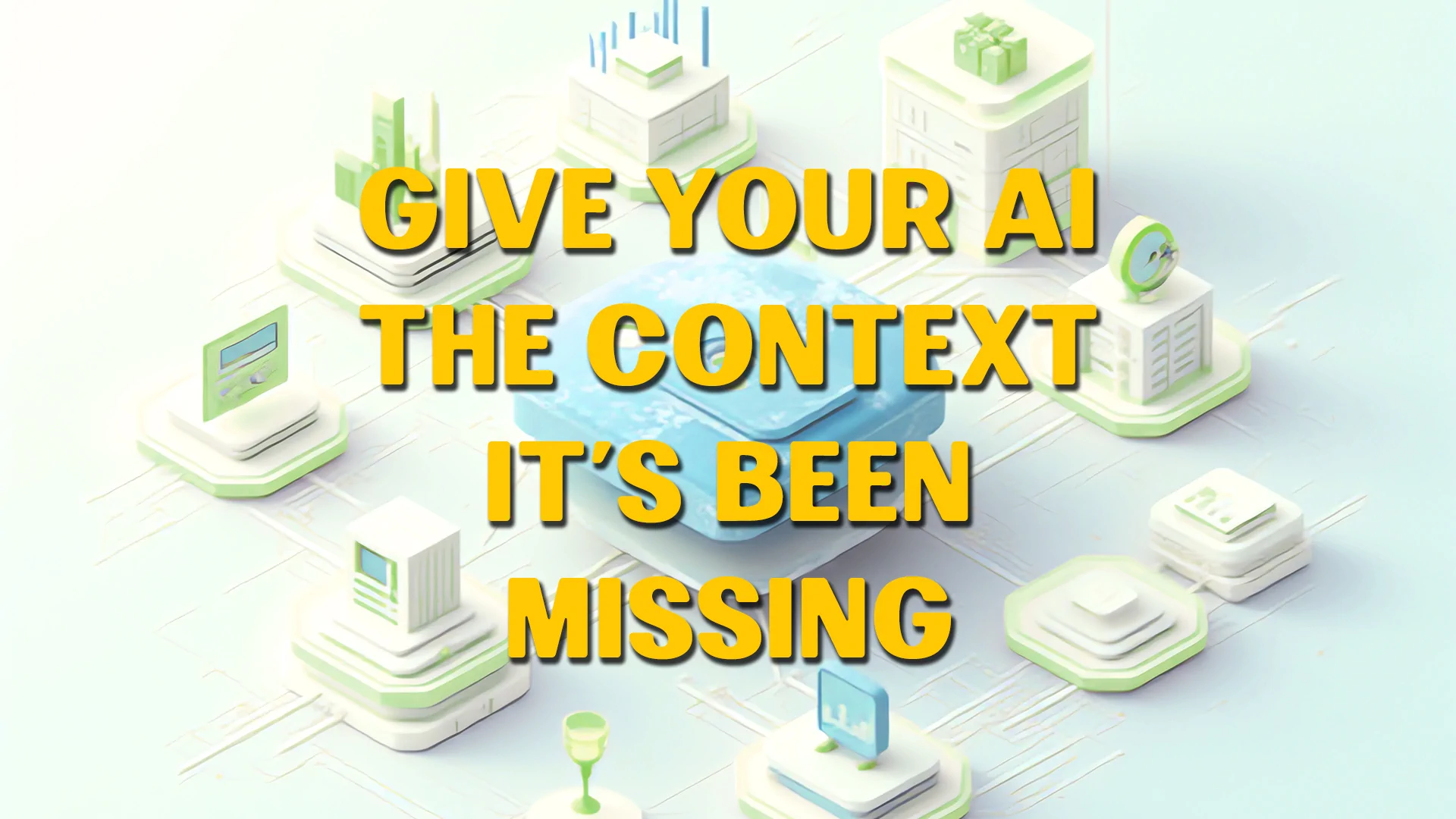Everybody is Talking About MCPs. What Is It and How Do I Get Started?

You might have seen people online talking about MCPs lately and wondering: What the heck is an MCP? And how do I start using one?
Here’s a quick overview to get you up to speed.
What Is an MCP?
MCP stands for Model Context Protocol. In simple terms, an MCP is a protocol that helps AI tools maintain context and access up-to-date information while you work with them.
Normally, every time you chat with an AI, it starts from scratch and might use outdated information from its training data. With MCPs, you can enhance the AI’s capabilities by giving it access to current documentation, context from your previous interactions, and real-time information sources.
How MCP Improves Your Workflow
MCP gives your AI a “perfect memory” in two big ways:
- It remembers the important context of your project across sessions, so you don’t have to keep re-explaining yourself.
- It fetches real-time information, so you’re always working with the most accurate, current data — not outdated training data.
This combination makes AI feel more like a true assistant that understands you.
Getting Started with Context7
Context7 is currently one of the most popular MCP server implementations. Here’s why it’s worth trying:
- Real-time Documentation: Automatically injects up-to-date library documentation into your AI conversations
- Easy Integration: Works with popular AI coding tools like Cursor, Claude Desktop, VS Code, and more
- Version-aware: Provides accurate, version-specific code examples and API references
- Universal Compatibility: Supports major MCP-compatible clients
Quick Setup Instructions for Context7
-
Choose Your AI Tool Context7 works with several popular AI coding assistants. I am currently using it with Cursor and Claude Desktop. Pick the one you prefer:
- Cursor
- Claude Desktop
- VS Code
- Windsurf
- And more
-
Install Context7 Depending on your chosen tool, you’ll need to configure the Context7 MCP server. Their GitHub repo has instructions for each tool. Here are a couple examples:
For Cursor:
{ "mcpServers": { "context7": { "command": "npx", "args": ["-y", "@upstash/context7-mcp@latest"] } } }For Claude Desktop:
npx -y @smithery/cli install @upstash/context7-mcp --client claude -
Start Using Context7 Once configured, you can activate Context7 in any prompt by adding
"use context7"at the end:Example:
- “Create a Next.js app router project. use context7”
- “Show me how to use React Query v5. use context7”
-
Verify It’s Working When Context7 is active, you’ll notice:
- More accurate, version-specific code examples
- Up-to-date API references
- Better understanding of current best practices
Finding Other MCP Servers
While Context7 is a great starting point, there are many other MCP servers you can explore depending on your needs.
Two good directories to find them are:
- punkpeye/awesome-mcp-servers — A curated GitHub list of MCP servers.
- Awesome MCP Servers — A searchable community-maintained directory.
Important: Be careful when trying random MCP servers. Since MCP servers can inject data into your AI sessions, a malicious server could:
- Feed you incorrect or harmful information
- Leak your queries or private data
- Damage your projects by providing misleading documentation
Always do a little research before installing and using a new MCP server — check community reviews, GitHub issues, and whether the project is actively maintained.
What’s Next?
MCPs are still new, but getting set up with something like Context7 is a good way to stay ahead. Having real-time docs and better memory in your AI tools just makes everything a little easier.
Sprouts 🌱 are early ideas that might need revision and attention.
Saplings 🌿 are a step above—not fully developed but more fleshed out than sprouts.
Evergreens 🌲 are complete and likely won't be updated anymore.
Read more about my digital garden.